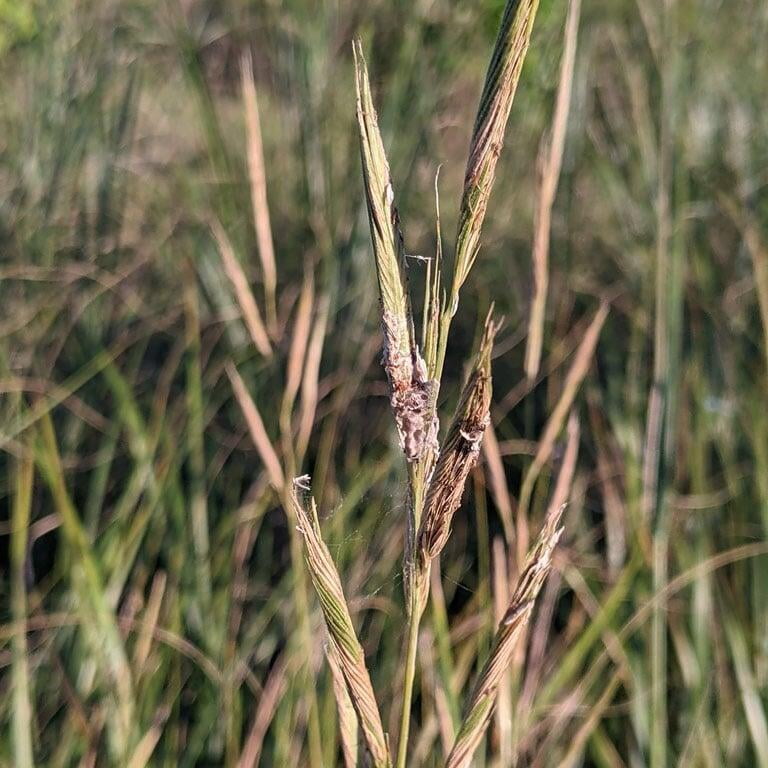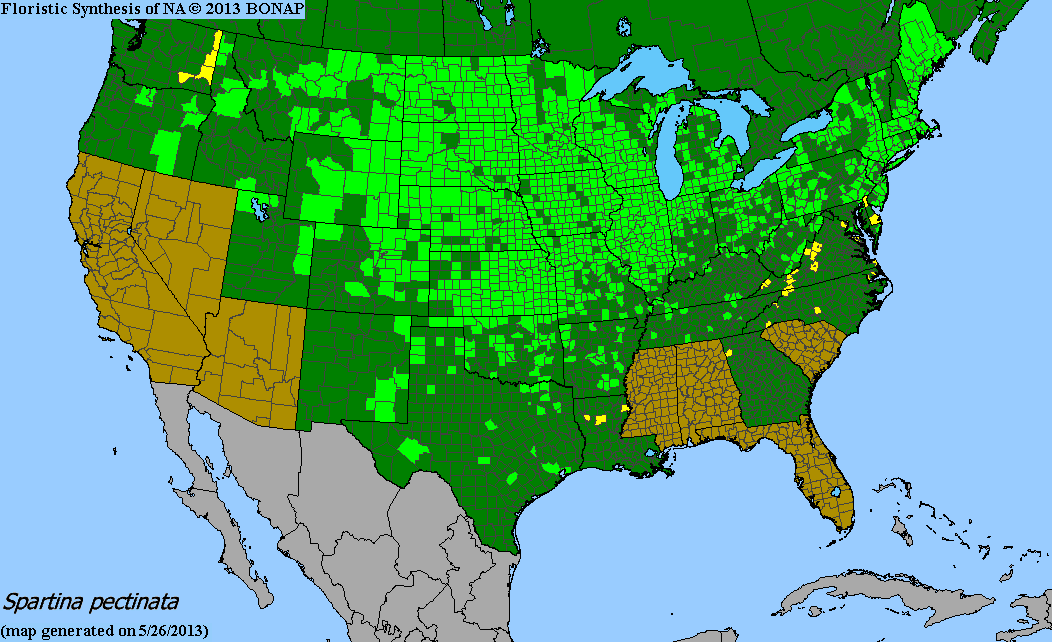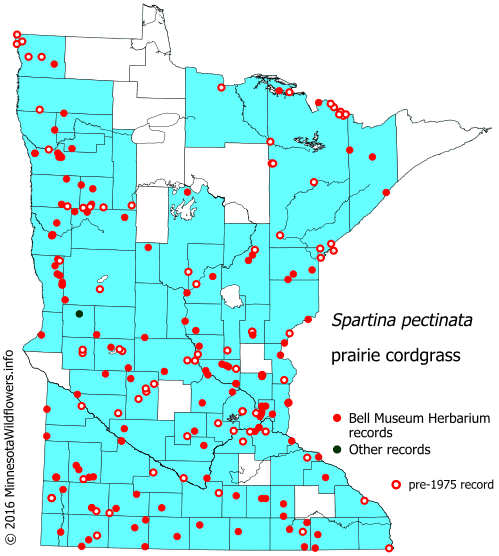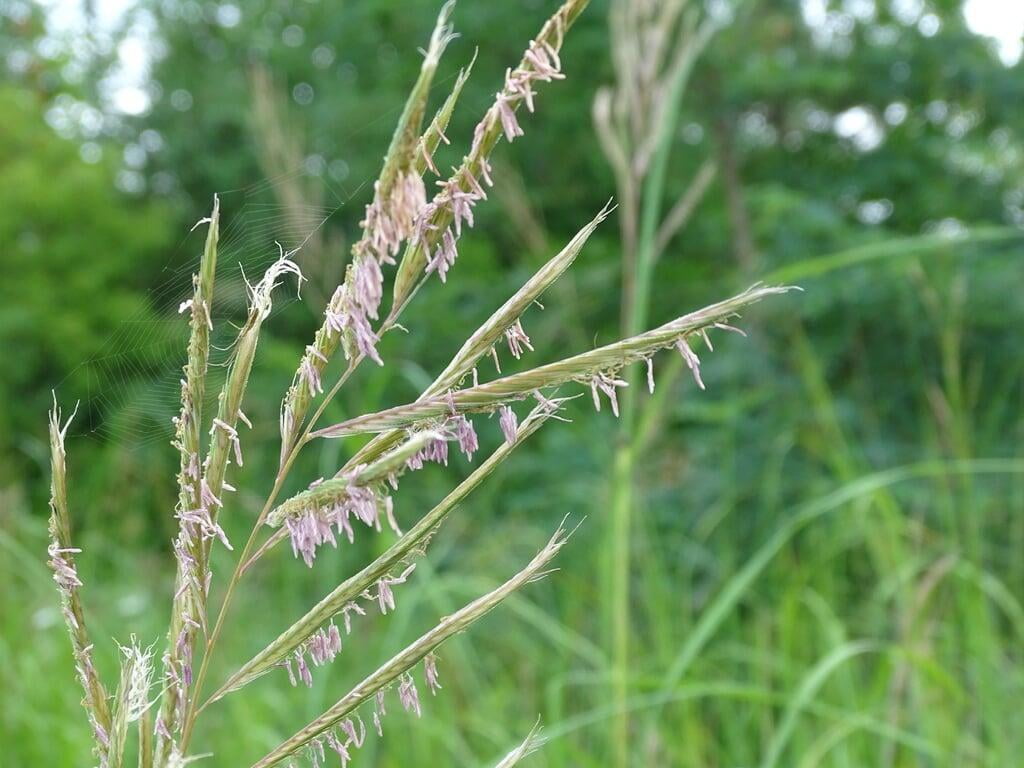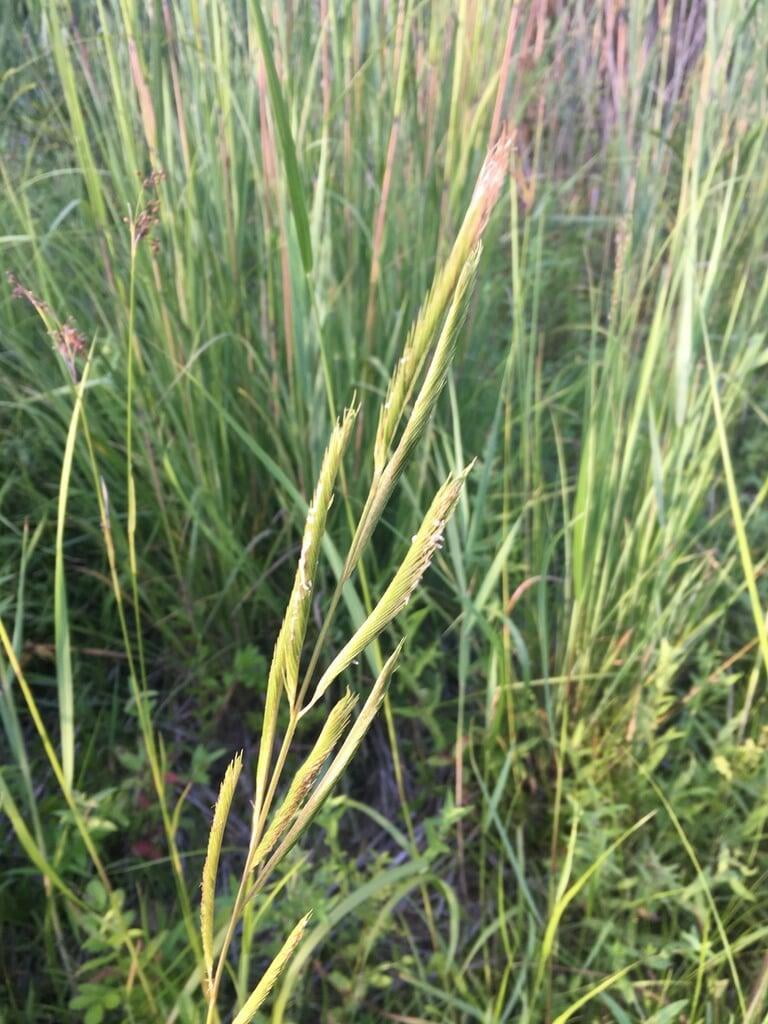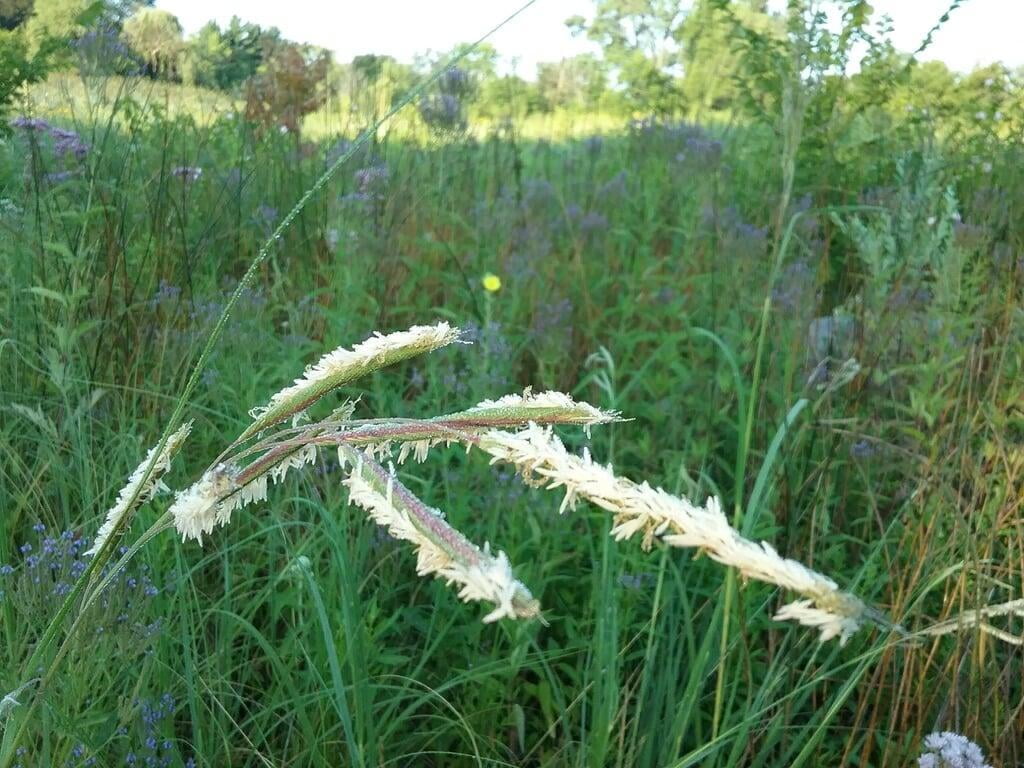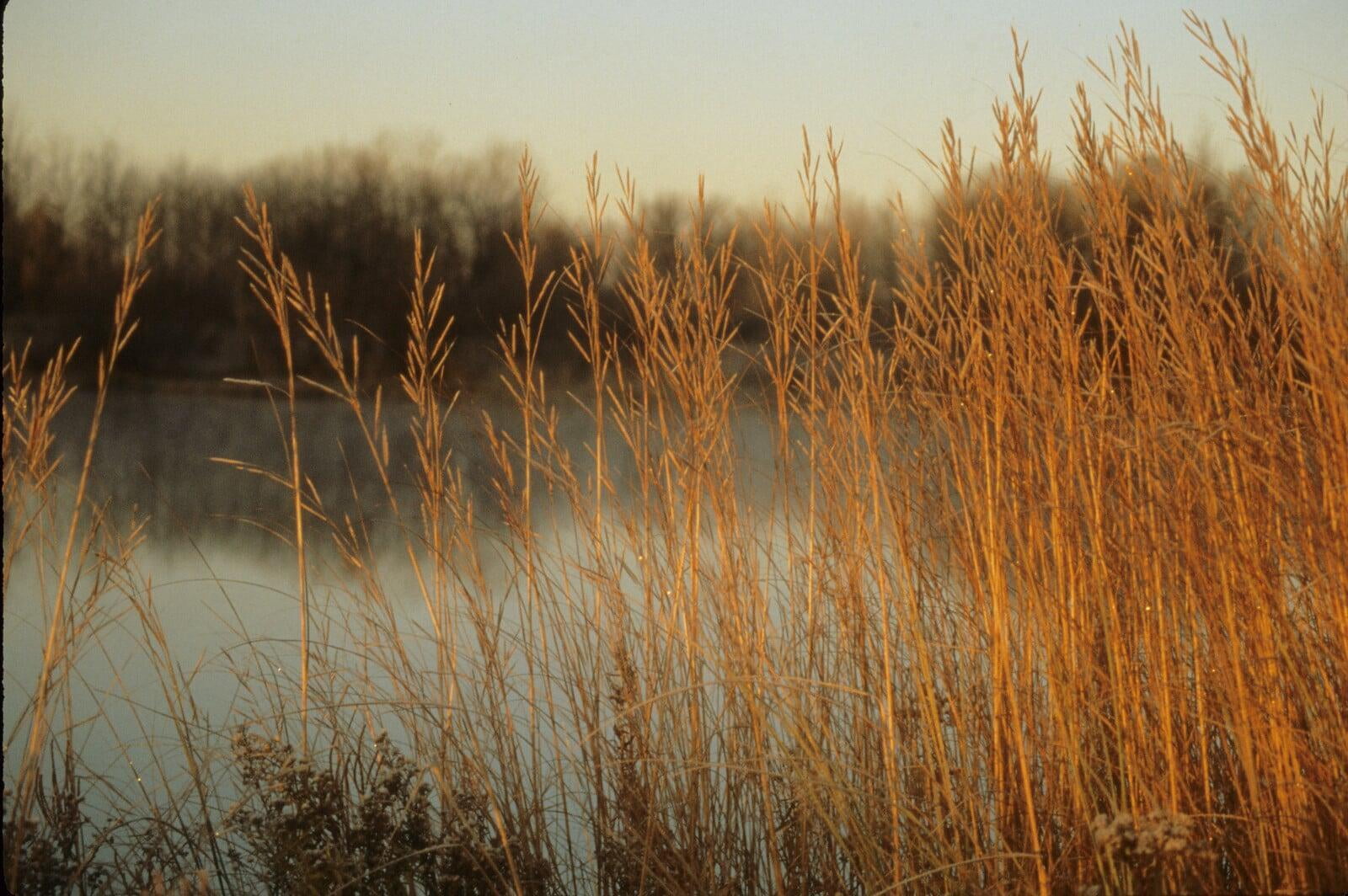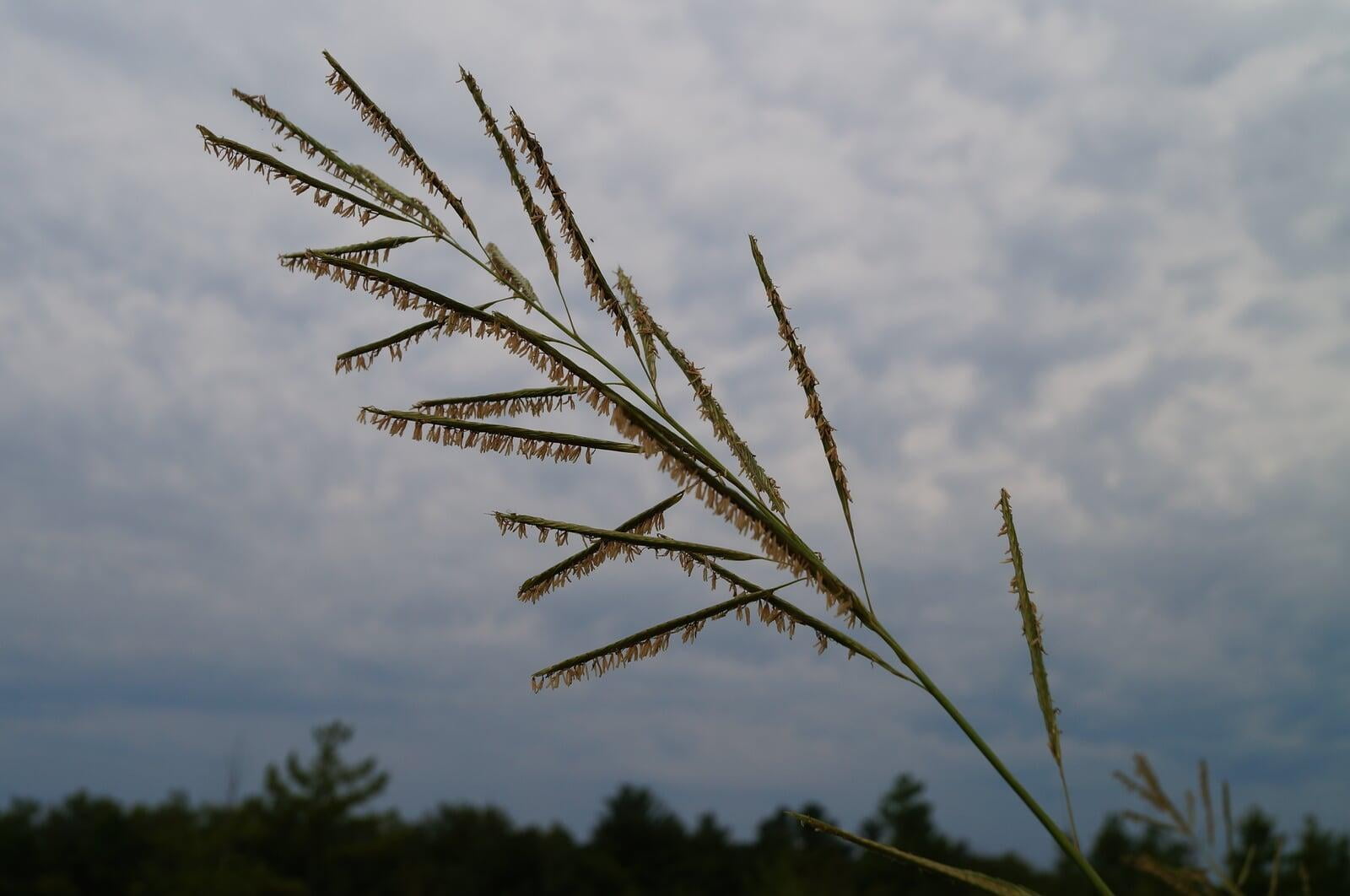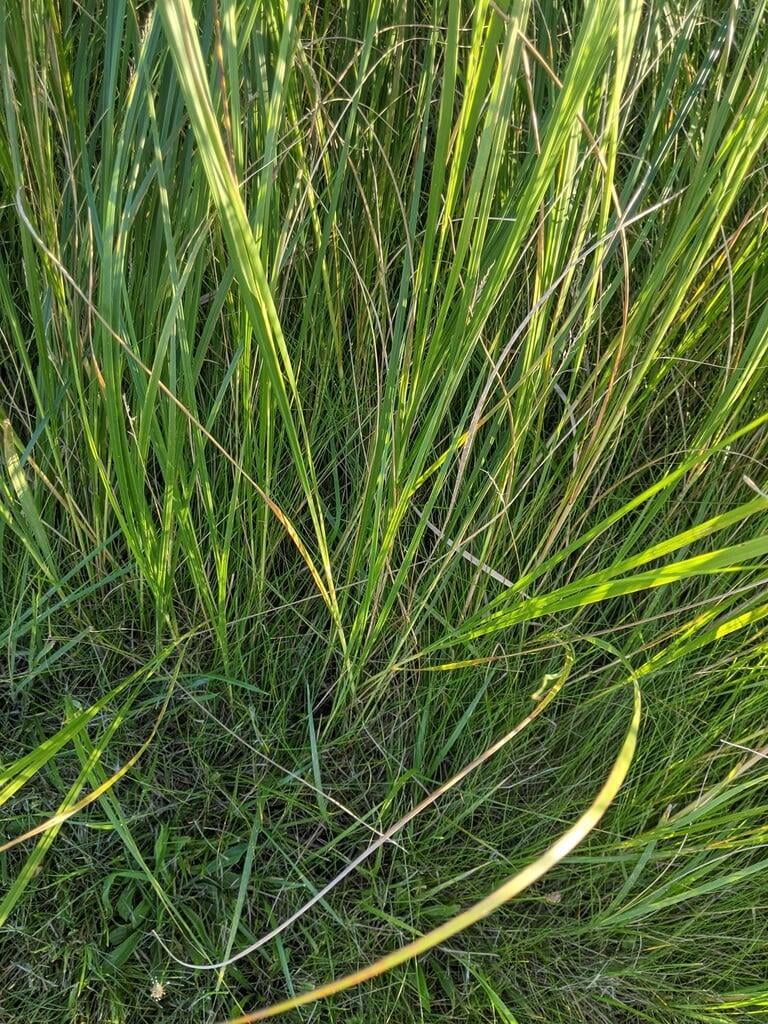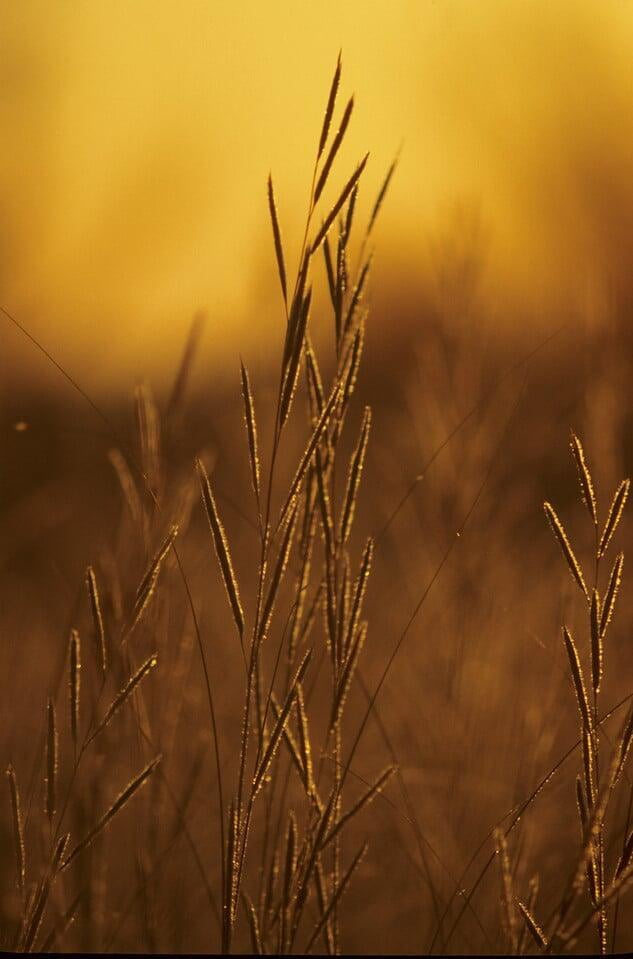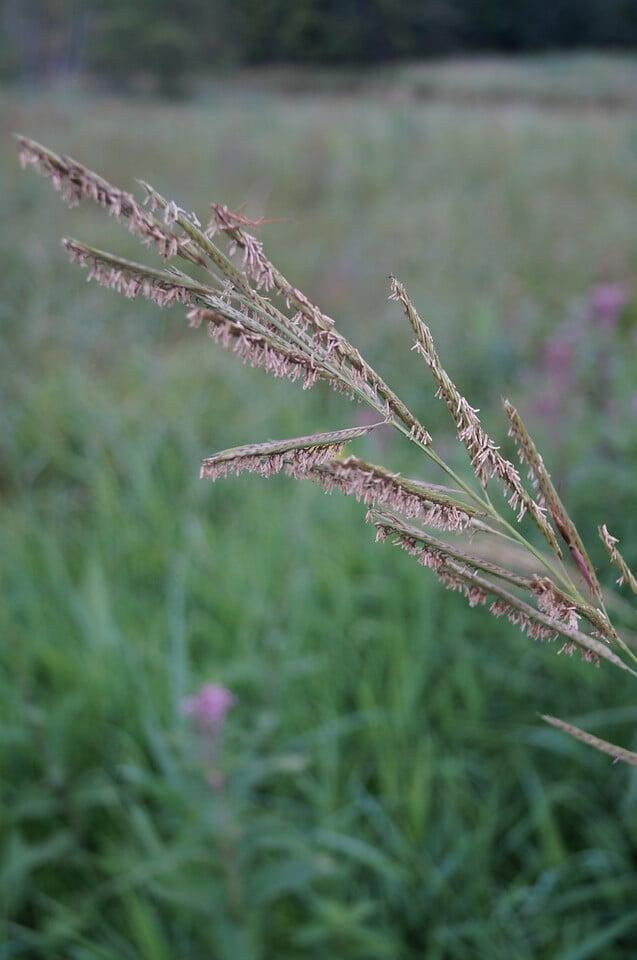Spartina pectinata
Cord grass Description:
Spartina pectinata, also known as prairie cordgrass, is a tall, native wetland plant that is found throughout North America. It is a perennial grass that can grow up to 8 feet tall and forms dense, clumping colonies.
The plant has long, narrow leaves that are blue-green in color and can grow up to 2 feet (60 cm) long and 0.4-0.8 inches (1-2 cm) wide. The leaves have a rough texture and are arranged alternately on the stem. In late summer, prairie cordgrass produces tall, narrow flower spikes that can reach up to 10 feet (3 meters) in height. The flowers are green or yellow and produce small, brown seedheads that persist into the winter.
Spartina pectinata is a valuable plant for wetland restoration and erosion control. Its deep root system helps to stabilize soil, prevent erosion, and filter pollutants from water. Additionally, prairie cordgrass is a salt-tolerant plant and can be used to reclaim saline soils. It is also a useful biofuel and forage crop, as it produces a high yield of biomass that can be used for energy or animal feed.
In addition to its practical uses, Spartina pectinata is also a popular ornamental grass in landscaping due to its tall, elegant appearance. It provides food and shelter for a variety of wildlife species, making it an important plant for biodiversity. Overall, prairie cordgrass is a versatile and valuable plant with many ecological and economic benefits.
Native Range:
Cord grass ranges from the Northwest United States all the way to the East coast. Its souther range extends down Central United States to Texas.
Standard Plant Information:
Plant height: 3' - 8'
Fruiting time: August - October
Preferred habitat: Does well in full sun and moist to dry sandy or loamy soils. Often found in swales, marshes, along shores, and prairies.
Sowing:
For most homeowners, the best option is to scatter seed on the ground by hand broadcasting at a minimum of 15-16 pls lbs per acre. For even coverage, we recommend that you broadcast seed in perpendicular rows across the site to ensure even coverage.
Planting:
Simply dig a hole in the soil slightly larger than the plant’s roots. Ensure that the soil line of the plant is maintained during the transfer (i.e. the plant should be at the same level with the ground as it was in the pot). Pack any loose dirt back around the plant and make sure you water it well the same day to ensure it has the best chance of survival.

